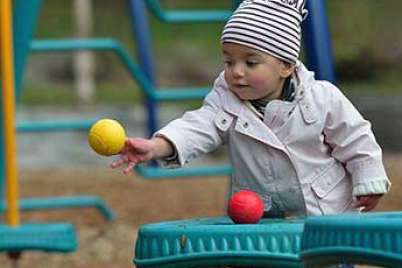
Mindfulness for families: 7 tips to get you started
Editor’s note: This article was first published on October 16, 2016.
According to an article in the Globe and Mail, data shows that Canada’s youth are suffering from rising levels of anxiety, stress, depression, and suicide.
A large-scale 2016 study tracking Ontario students for the past 20 years found that one-third had moderate to severe symptoms of psychological distress—an increase from two years earlier. However, researchers from John Hopkins University in Baltimore, Md., found that meditation and mindfulness reduce anxiety, depression, and pain.
So, how can we reduce anxiety? Start by practicing mindfulness as a family.
Modelling mindfulness
The key is to create healthy, mindful habits that our children might also embrace. And it starts with us. Parents. Not dissimilar from the airplane depressurization context when you must first put on your own oxygen mask before securing your child’s.
I recommend that you practice mindfulness yourself first with these three daily exercises:
1. Meditation: Even five minutes a day can help calm your nervous system. I find the “after” effects of meditation similar to exercise; afterward, I feel calmer and centered. The word “meditation” can sometimes feel overwhelming but it doesn’t have to be. Take some of the guesswork out of it by downloading an app like Headspace or Calm and try a guided meditation or a “meditation challenge.”
2. Be active: If physical activity isn’t already part of your life, make a commitment to exercise at least 30 minutes, five times a week. In combination with meditation, exercise has been shown to be effective in combatting symptoms of depression. And with 150 minutes of physical activity a week, you’ll also likely find yourself sleeping better. I’ve even noticed that when I’m physically active it helps to ward off sickness.
3. Be present: When you start to feel your mind racing with tasks, take a moment to be aware of your present surroundings. Use all your senses. Take a deep breath, smell, listen, and look at what surrounds you. Try to focus on the bigger picture and don’t fixate on one thing. Ask yourself, will this really matter three months from now?
Passing it on to your kids
Once you’re feeling more at peace it’s time to start talking about mindfulness with your children:
4. Find out what they already know. Some schools in Canada are starting to incorporate mindfulness into the curriculum and your kids might already be familiar with the concept. Ask questions and get them feeling good about what they already know. They might have mindfulness exercises from school that you can try out as a family.
5. Show them how their minds impact their bodies. Talk to your children about the power of their thoughts, being present in their bodies, and not trying to multi-task. For example, experiment with doing one thing at a time, i.e. don’t play on devices while eating breakfast. Help kids understand that staying focused on what they are doing is often the best route to pure enjoyment. Try a mindful eating exercise and see if they notice a difference when they are solely focused on the taste and texture of what they are eating.
6. Show them how their bodies impact their minds. Address how their bodies can help them when they are going through difficult times or experiencing feelings they aren’t sure how to deal with.
- Feeling angry? Learn how the breath and time (i.e. focusing on breathing in and out or counting to 10) can help us deal with difficult feelings.
- Feeling anxious? Power poses can help kids feel more confident. Teach your children to have fun with the superhero pose.
- Feeling sad? Teach kids how smiling can release good feelings even when we are in a challenging or stressful situation
- Feeling envy? Help kids practice gratitude. Teach them to be joyful about the everyday things they are doing and gifts they are blessed with.
7. Try some visualization to help calm nerves. Show children how practicing mindfulness can help with performance, including dealing with the pressure and anxiety that sometimes comes with sports or academics. For example, let’s say your child is nervous about running a cross country race. Show them how visualizing success (i.e. crossing the finish line, or completing their class presentation) can help them achieve results. Ask them to imagine what it will feel like when they reach their goal.
The bottom line
Life is short. Focusing on mindfulness within the family unit will create a powerful, happy, and rewarding family life where relationships and kindness flourish.






Trying to get everyone to be more intentional in our family and focus on one task at a time is important to us as a family. Putting away the smartphone and getting outside more in nature (year round) makes a huge difference. Taking time for solitude also is so critical as a parent.